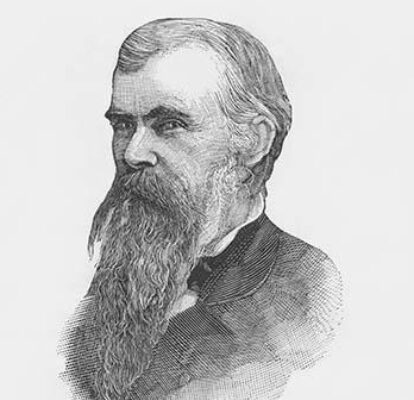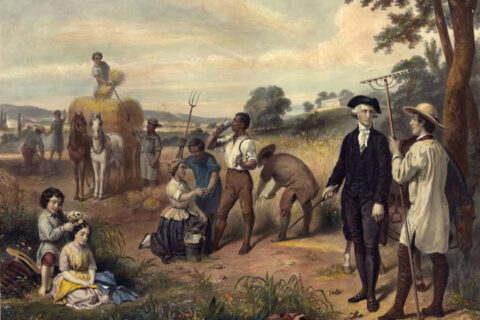Author’s Preface: This essay functions as a second part to the essay “Southern Whiggery, Bourbon Democracy, and Expedient Moderates.” As my research regarding Reconstruction and the subsequent Jim Crow Era continues, I find it the Whig influences on the Democratic Party grow with each passing source. It is currently a difficult task to compile all within the subject into a single essay; therefore, a second, and more focused, one on the subject is necessary.
The extent to which the Whig takeover of the Democratic Party after the former’s dissolution remains difficult to compile, much less wholly complete. Holding significant power within the Southern sections outside the Upland Cotton belts, Whigs quickly seized the reins of power from the Jeffersonian factions of the Democratic Party post-1850. Boasting a powerful coalition within the Confederate Government and the subsequent rival parties which fought bitterly during Reconstruction, as well as, the one-party system which followed the Radicals’ ousting from power, the Whigs, and their successors, effected significant influence and political movements often not heard of or correctly associated with them. This essay will examine the Whig origins and influence of the New Departure, New South, and new political idealism which permeated in the 20th Century.
Uncharacteristic of the view often associated with the Redemption of the South, the majority of Redeemers came previously from the Whig Party and heavily supported the New Departure strategy during Radical rule. Having no avenue in the South to create their own party following the previous incarnation’s disbandment, these individuals quickly infiltrated the Democratic Party during the 1850s and had wrestled total control from the Jeffersonians still in power. As can be seen with a keen eye, a large swathe of the Confederate political body, particularly in Richmond, consisted of former Whigs.
Though causing a great deal of infighting within the Confederacy itself, the Democratic Whigs’ first significant political movement to effect Southern social practices post-1850 manifested as the New Departure movement during Reconstruction. The New Departure began fairly quickly following the War’s conclusion and sought to broaden the Democratic voting base. They distanced themselves from the hard-line racialist secessionist sympathies common among Jeffersonian Democrats. Beginning a sinister trend among conservative representatives which currently continues in contemporary sociopolitical matters, the Whig elements began the process of giving ground on social issues while focusing more on economic policy. Permeating primarily within the Upper South, the movement concentrated in states with larger populations and more developed urban areas. As a result, the adhering faction of the Democrats never penetrated the Deep South, with the only exception being Georgia. This faction would come to be infamously known as the Bourbon Democrats.
The New Departure, though not successful in the entirety of the former Confederacy, did eventually give way to the much more effective New South Era of 1877 to 1913. This period brought with it the first half of the Jim Crow Era, and the movement itself bred differing strains of Jim Crow society. Being the natural memetic descendant of New Departure Democracy and gaining power via the South’s Redemption at the end of Reconstruction, the New South’s political adherents sought to usher in a new age of Southern society. The creed of the movement sought to modernize the industry of Dixie, adhere to economic responsibility, and encourage urban growth.
In order to achieve these goals, the politicians of the Bourbon Democracy catered to the resentful nature of poorer whites, particularly of Appalachian stock, by passing harsh Jim Crow legislation which only grew with time. Appalachians and many whites in these areas were already resolute supporters of the Whig Party prior to its dissolution in 1850, particularly with respect to its platform of internal improvements and protective subsidies for American industry. These measures ensured the capitulation of rural citizens who disliked, by nature, any elites who resided in government; additionally, the measures caused urban life to appear more appealing to the rural populaces via separation from Negroes.
Manifesting differently within each state who adopted the ideals, the effects of the New South Movement were broad and multifarious. Stimulated from the quick rebuilding of larger Southern cities, Virginia, Tennessee, Texas, North Carolina, and Georgia all adopted New South sentiments, each with their own local businesses supporting urban development and growth.
| City/State | Population, 1890 | Population, 1930 | 1890/1930 |
| Birmingham, AL | 26,178 | 259,678 | 991.97% |
| Charlotte, NC | 11,557 | 82,675 | 715.37% |
| Atlanta, GA | 65,533 | 270,366 | 412.56% |
| Montgomery, AL | 21,883 | 66,079 | 301.96% |
| Richmond, VA | 81,388 | 182,929 | 224.76% |
| New Orleans, LA | 242,039 | 458,762 | 189.54% |
| Charleston, SC | 54,955 | 62,265 | 113.30% |
Georgia attracted rapid development because of its already existing railroads, and men like Henry Grady preached industrialization. Texas also notably participated within the movement via its unwavering contribution to western railroad and oil drilling expansion in addition to its urban expansion caused by the immigration of Southerners looking for financial opportunities, particularly under the leadership of Governor Jim Hogg and his ideological constituents. However, despite the best attempts of the Whiggish New South’s financial focus, its supporters could not overcome the economic suppression of the Southern economy, leaving their financial endeavors only a modicum of success.
Despite the fervent support for industrial urban development, the Whigs’ successors within these movements accomplished the most within their support of social policies, particularly Jim Crow laws. This being due to the economic hurdle Northern legislators placed on the Southern economy, discriminatory laws which did not end until the Franklin D. Roosevelt administration several generations later. The aforementioned segregationist ideals bolstered the support the Whigs desired from rural populations. In order to quell the hostility of poor whites, often of Appalachian extraction, towards the elites and Negroes, stringent Jim Crow laws were passed in the urban areas to keep the peace and populace’s compliance.
As the 19th Century transitioned into the 20th, politics in the South underwent a variety of movements, and the Democratic Party continued quarreling within itself while also merging various factions together. At the state level, Texas Democrats merged Whiggery with the more conservative elements in the Deep Southern East Texas, resulting in a railroad and oil focused Democratic Party with strong liberal populist leanings by the 1880s. Virginia produced warring factions at the local level, notably the Readjuster Party and Funder Party. Originating from the Conservative Party, these two were wholly Whig in origin. Left-wing populism overtook North Carolina, fusing a number of white, Negro, and bipartisan elements while ensuring Republican victory, and a reactionary insurrection ensued in 1898. South Carolina overturned its more moderate members, though not necessarily former Whigs or their descendants, within the Democratic Party in favor of the populist agrarian Ben Tillman and his cohorts in 1890, the only Deep South state alongside Louisiana to produce such an intense struggle between Jeffersonians and their opponents. Every other one remained relatively Jeffersonian.

The 20th Century saw the continued fusion of Whiggery and a multitude of different political -isms. Of course, these produced a number of outcomes and factions depending on the state it existed. While Mississippi, Louisiana, and South Carolina remained most resistant to this phenomenon, other Southern states did not fare so well. Being connected to large numbers of Appalachians, urbanites, and populations of newcomers, the Deep South regions of Alabama, Georgia, East Texas, and North Florida, though resistant to the ideals, could not develop a genuine immunity to Whiggish presumptions. Additionally, statesmen like Harry Byrd Sr. stood as prime examples of the aforementioned merging of positions. He supported fiscal responsibility and sided with the National Democrats in opposition to the States’ Rights Democrats, yet he supported infrastructural improvement and taxes. Virginia as a whole also passed a number of laws enforcing harsh racial policies, including the Racial Integrity Act of 1924, the Public Assemblages Act, and the eugenics influenced Sterilization Act of 1924. Race relations continued to sour during this time and continue, in a contemporary setting within these formerly Whig strongholds, to represent some of the most macabre attitudes towards Negroes. The Whigs continued to dominate the Democratic landscape, and the conservative elements eventually left the party, favoring the Republican Party as it presented itself as the “law and order” party during a period of widespread social barbarity and being that it was the natural succession of the Whig Party.
The passing of Jim Crow laws continued as the 20th Century proceeded in the same aforementioned locales. As a result, race relations hit their deepest nadir in states with large urban populations and Appalachian influence, vindicating the stereotype often attributed to the Deep South where relations between whites and blacks remained marginally more peaceful. Though segregation in the South is typically considered de jure in comparison to the de facto nature often seen in Northern cities, the atmosphere in the Peripheral South carried a more de jure environment where Whig ideals permeated, whereas the Deep South manifested a more de facto segregation environment where Jeffersonianism, agrarianism, elements of natural aristocracy, and low church Protestantism still existed and dominated the social landscape.
Upon analysis of the New Departure, New South, and new idealism of the succeeding 20th Century, the evidence becomes painstakingly obvious to an honest observer that the Whig influence on Southern society dominated the political landscape outside most of the Deep South. Interested solely in social control and financial pursuits, the Whig descendants instituted elaborate urban development schemes and instituted, over generations, a series of increasingly baleful segregation laws designed to ensure these schemes’ success, all against the backdrop of moderation. These elements only sold themselves to liberalism to equivocate their images and survive in a post-Civil Rights Southland. The Whigs, did not die in 1850, they simply infiltrated other elements of Southern society, exerting significant authority over the development of mass swathes of Dixie well into the 20th Century.
“The White people of the South are the greatest minority in this nation. They deserve consideration and understanding instead of the persecution of twisted propaganda.” –Strom Thurmond






I hates yanks